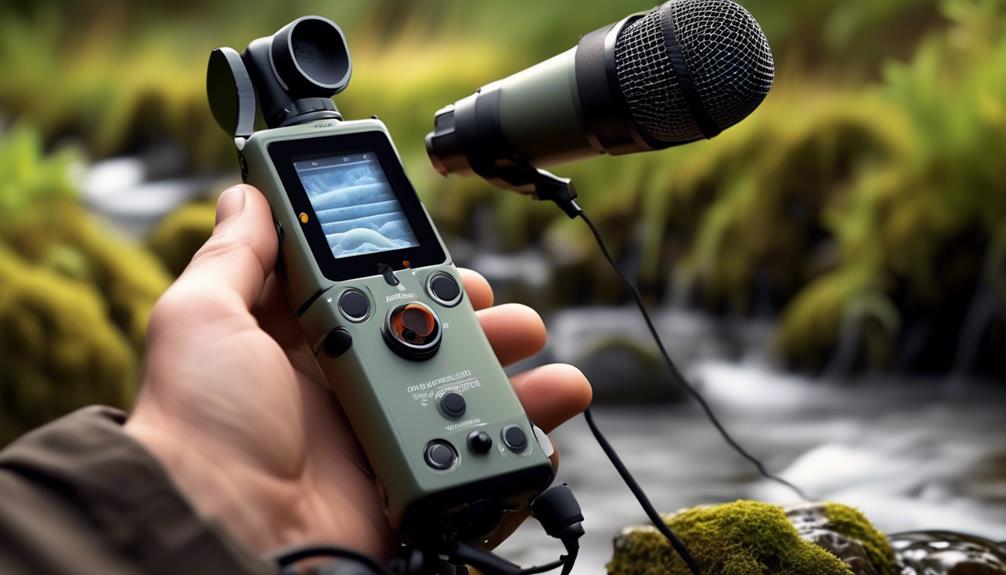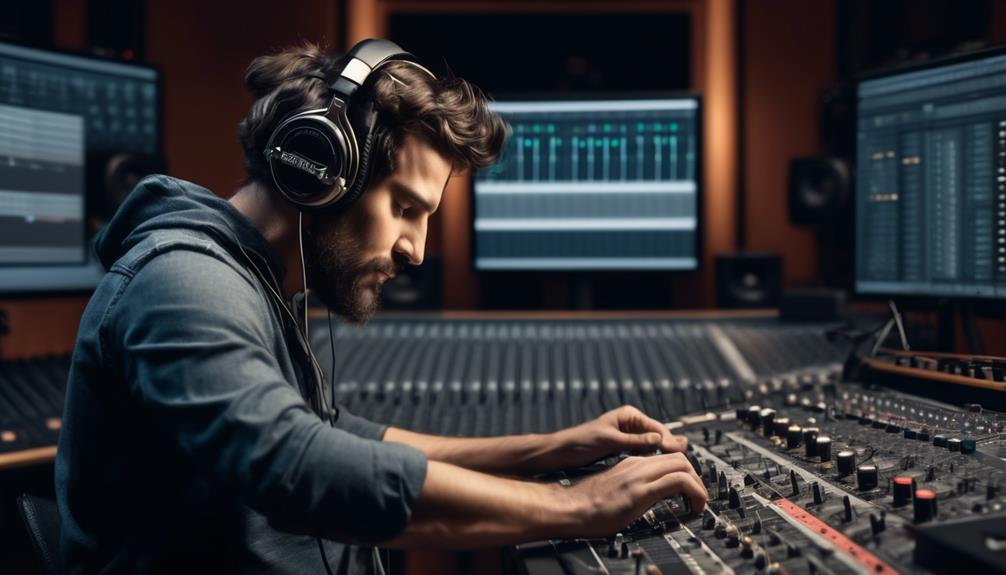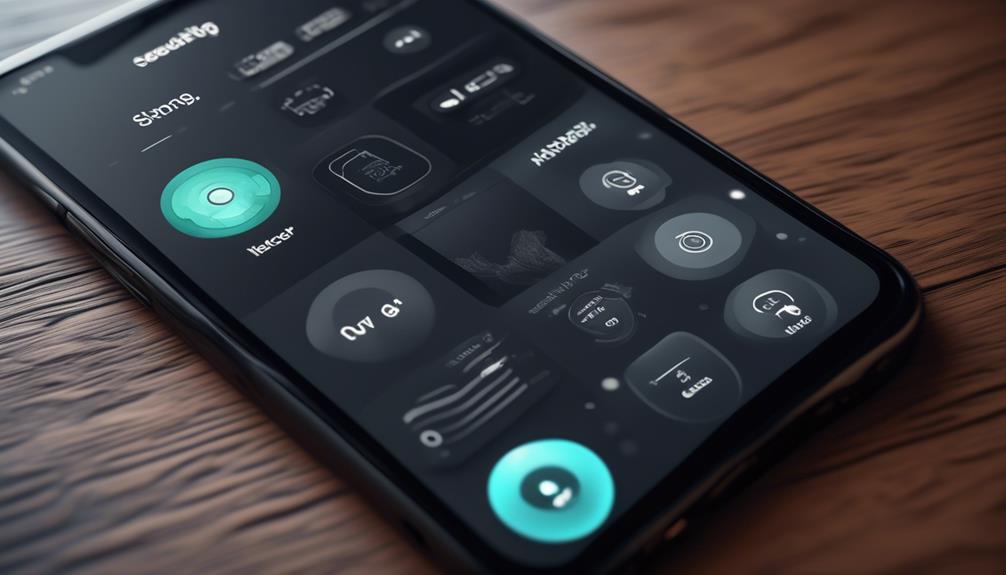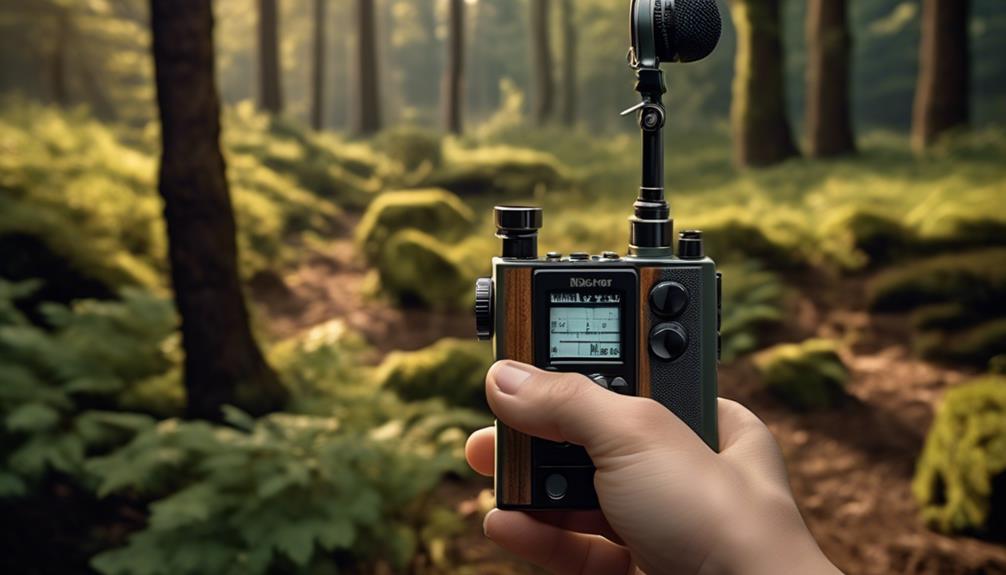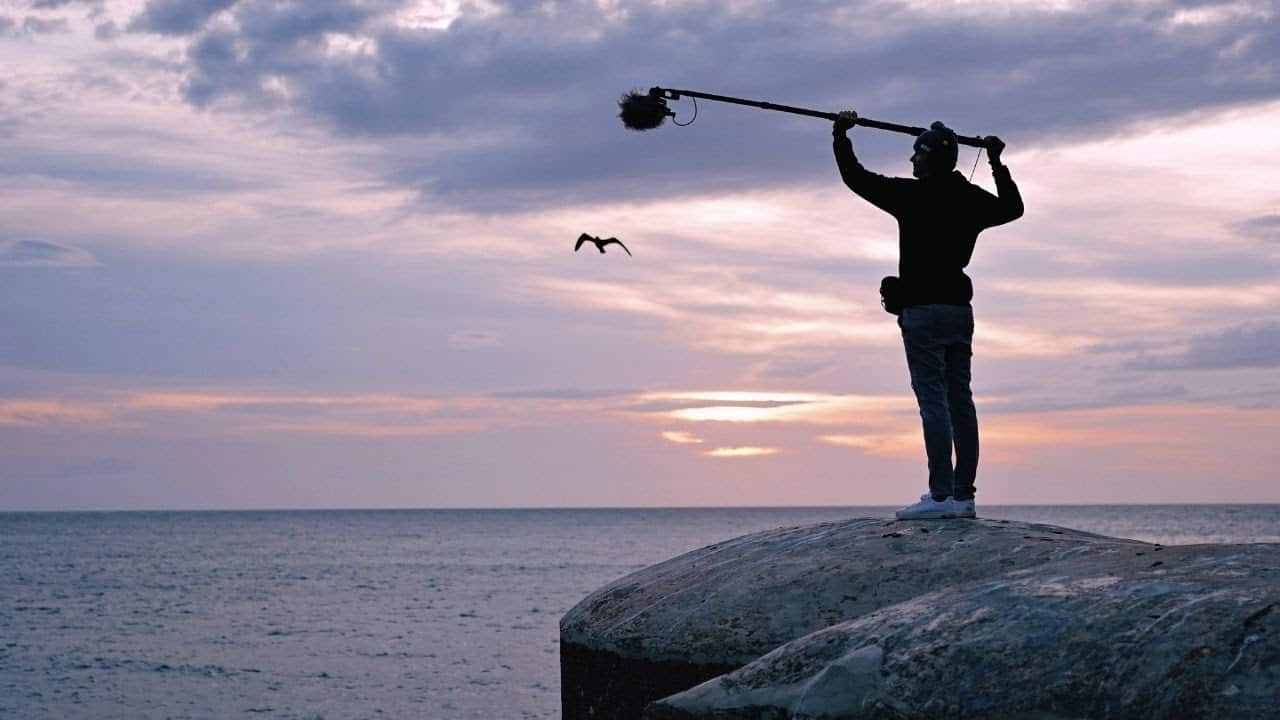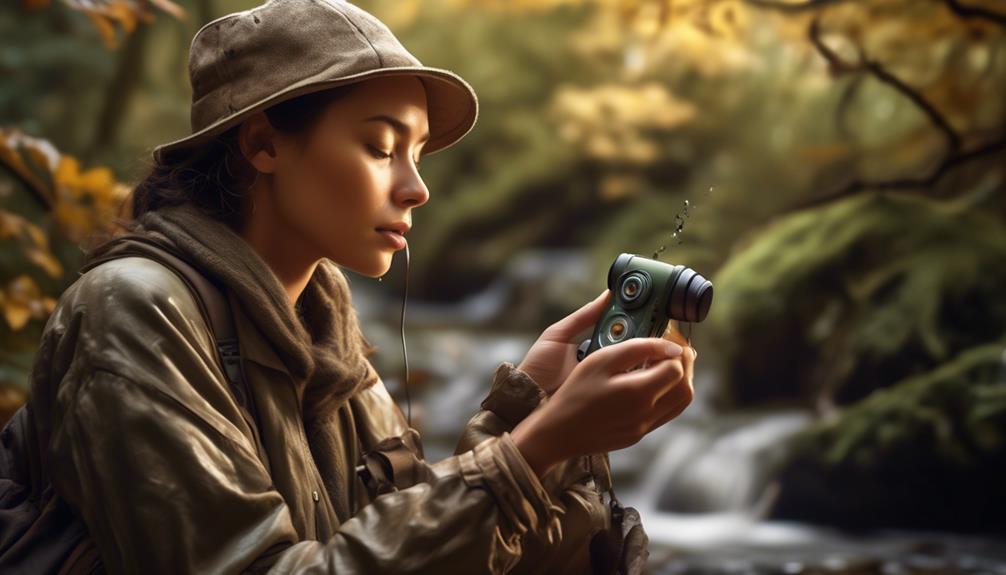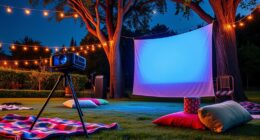Field recordings serve as portals to the world, providing a peek into the auditory environments that envelop us on a daily basis.
But what exactly qualifies as a field recording, and what sets it apart from other forms of audio capture? Well, it's not just about capturing sound; it's about encapsulating an experience.
As we explore this topic, we'll uncover the intricacies of field recording, from its historical roots to its modern-day applications in sound design and beyond.
Join us as we unravel the layers of field recording and discover its significance in the realm of audio production.
Key Takeaways
- Field recording originated in the late 19th century and has evolved from scientific research to sound design and creative expression.
- Selecting the right microphone and using specialized equipment and techniques are crucial for capturing high-quality field recordings.
- Field recordings enhance audio scenes, document unique audio signatures, and create a sense of space and dimension in audio.
- Field recordings have cultural and environmental significance, capturing and preserving sounds, contributing to the documentation of intangible cultural heritage, and supporting environmental advocacy and awareness.
History of Field Recordings
Field recording has evolved significantly over the years, with its origins in phonography for research and film. The history of field recordings dates back to the late 19th century when the first recordings of natural sounds were made. The pioneering work of Ludwig Koch, a German field recorder, marked the beginning of capturing and documenting natural sounds. These early recordings were made using rudimentary equipment, but they laid the foundation for the development of field recording as a specialized discipline. The advent of acoustic recording technology further expanded the possibilities for capturing natural sounds in diverse environments.
The history of field recording is characterized by a gradual shift from its initial purpose in scientific research and foley work for film to its contemporary applications in sound design and creative expression. The recorded sounds have become an integral part of various media, contributing to the immersive experiences in films, documentaries, and video games. As technology advanced, the field recorder's role evolved, requiring adaptability and innovation to capture high-quality audio in challenging and dynamic outdoor settings.
Techniques and Equipment
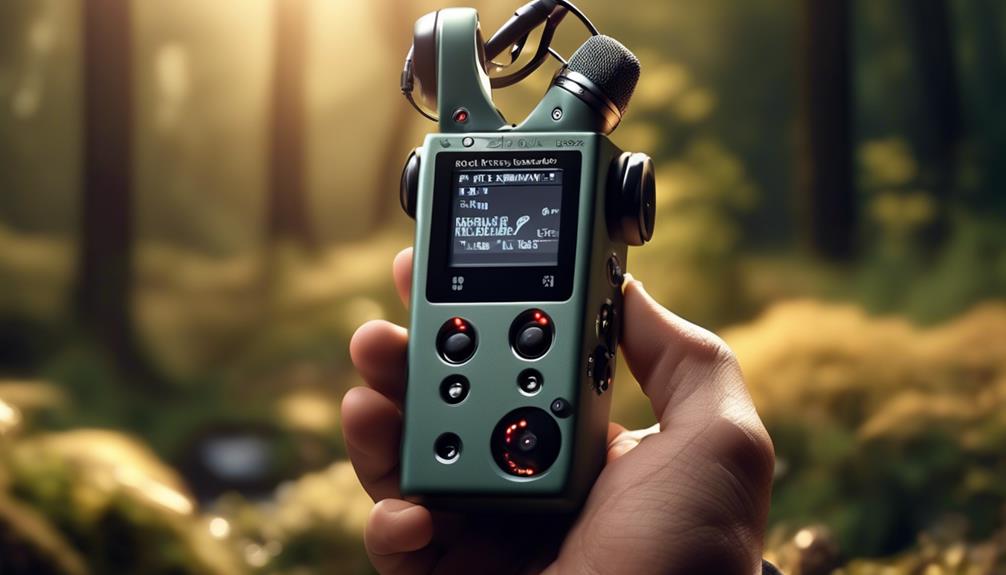
Utilizing high-quality equipment and specialized techniques, field recordists are able to capture low-level and complex ambient noises in various outdoor environments. When venturing into the field for recording, we rely on a range of techniques and equipment to ensure the best possible recordings:
- Microphones: Selecting the right microphone for the specific acoustic environments is crucial. Directional microphones are often used to capture sound effects with precision, while omnidirectional microphones are preferred for capturing a more natural, ambient sound.
- Noise Reduction: Employing techniques such as strategic placement of microphones and the use of specialized equipment like windscreens and shock mounts helps minimize unwanted noise interference and wind distortion.
- Recording Equipment: High-quality recorders and pre-amplifiers are essential for capturing pristine audio. These pieces of equipment ensure that the nuances of the natural environment are faithfully preserved in the recordings.
- Digital Technology: The advent of portable recording devices and powerful editing software has revolutionized field recording. These tools enable us to capture, manipulate, and refine recordings with unprecedented flexibility and precision.
- Accessories: Additional accessories like microphone cables and pop filters are indispensable for ensuring seamless and high-fidelity recordings.
Applications in Sound Design
Incorporating field recordings into sound design adds depth and authenticity to audio productions. When used in sound design, field recordings provide a rich source of material for creating immersive and realistic auditory experiences. Here are some applications of field recordings in sound design:
| Application | Description | Example |
|---|---|---|
| Ambient Sounds | Capturing natural environmental sounds such as wind, water, and wildlife to enhance audio scenes | Recording the sound of a forest for a nature documentary |
| Urban Environments | Documenting the unique audio signatures of urban spaces, including street noise and city life | Recording the bustling sounds of a busy city street |
| Stereo Recording Technique | Utilizing stereo recording techniques to create a sense of space and dimension in audio | Using XY or ORTF techniques to capture a wider soundstage |
| Portable Recording | Employing portable recording setups to capture audio in remote or inaccessible locations | Recording soundscapes in remote wilderness areas |
| Sample Rate | Adjusting the sample rate during recording to capture a wide range of frequencies and nuances | Recording at a higher sample rate to capture subtle details in sound |
Cultural and Environmental Significance

After exploring applications of field recordings in sound design, we now turn our attention to their cultural and environmental significance.
Field recordings serve as valuable archives of disappearing or changing cultural and environmental landscapes, offering insight into past and present sonic environments. They contribute to the documentation and safeguarding of intangible cultural heritage, providing a sonic record of traditions, languages, and ecosystems.
Additionally, field recordings facilitate cross-cultural understanding by allowing listeners to experience the sonic landscapes of different cultures and environments, fostering appreciation and empathy.
Furthermore, they support environmental advocacy and awareness by showcasing the beauty and fragility of natural soundscapes, potentially influencing conservation efforts and policies.
- Field recordings capture and preserve cultural and environmental sounds, including traditional music, rituals, and natural habitats.
- They serve as valuable archives of disappearing or changing cultural and environmental landscapes, offering insight into past and present sonic environments.
- Field recordings contribute to the documentation and safeguarding of intangible cultural heritage, providing a sonic record of traditions, languages, and ecosystems.
- They facilitate cross-cultural understanding by allowing listeners to experience the sonic landscapes of different cultures and environments, fostering appreciation and empathy.
- Field recordings support environmental advocacy and awareness by showcasing the beauty and fragility of natural soundscapes, potentially influencing conservation efforts and policies.
Career Opportunities
Career opportunities in field recording offer a dynamic and diverse range of roles for those passionate about capturing natural and human-produced sounds in various environments. As field recordists, we play a crucial role in producing recordings outside controlled environments for various media uses. This career demands patience, adaptability, and often involves freelancing with supplemental work during slow periods.
Essential equipment for field recording includes portable audio recorders, headphones, additional microphones, wind protection, stands, grips, cables, and memory cards. The recommended starting formats of 24-bit WAV at 44.1kHz provide high-quality sound, and there are various options for audio recorders, microphones, and wind protection available to suit different recording needs.
Being a field recordist requires a deep understanding of sound, ambience, and the ability to use directional microphones to capture specific sounds in outdoor recording environments. Additionally, there are opportunities to work on experimental music and cutting-edge projects, contributing to the development of new artistic possibilities.
Field recording techniques continue to evolve, creating a demand for individuals with a mastery of these skills and a passion for capturing the essence of diverse environments and experiences through sound.
Frequently Asked Questions
What Is a Field Recording in Music?
Field recording in music involves capturing ambient sounds and natural environments using specialized equipment. This recording process allows us to collect unique audio from outdoor locations, which we can then manipulate to inspire creative musical compositions and enhance documentary projects.
Our high-quality audio equipment enables us to immerse listeners in the authentic, immersive sounds of the world around us, adding depth and texture to our musical creations.
Why Do People Do Field Recordings?
We do field recordings to capture:
- Nature sounds
- Environmental ambience
- Wildlife documentation
- Cultural preservation
- Urban exploration
- Soundscapes creation
- Atmospheric capturing
- Location scouting
- Historical documentation
- Ethnographic research
These recordings allow us to immerse listeners in authentic environments, preserving and sharing the essence of a place or time.
What Are Field Recorders Used For?
Field recorders are used for capturing natural sounds, urban environments, cultural traditions, wildlife recordings, and soundscapes exploration. They're also valuable for environmental activism, documentary filmmaking, historical preservation, audio storytelling, and ethnographic research.
These recordings offer a unique perspective and immersive experience. They're essential for preserving the sonic heritage of different environments and cultures, providing a rich tapestry of auditory experiences for a variety of purposes.
What Is the Difference Between Field Recording and Studio Recording?
Field recording differs from studio recording in that it captures outdoor ambiance, natural sounds, and environmental noises in a live, uncontrolled setting. The process involves on-location recording in remote locations, resulting in authentic audio and raw audio.
Unlike studio recording, field recording takes place in a non-studio setting, allowing for the capture of unique and unfiltered sounds.
Conclusion
In conclusion, field recordings have become an essential tool for sound designers, capturing the natural and human sounds that bring immersive experiences to life.
Did you know that over 80% of sound designers use field recordings in their work?
From historical significance to environmental impact, the art of field recording continues to evolve, offering endless possibilities for creative expression and storytelling in various media.

